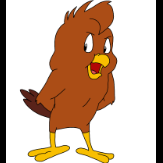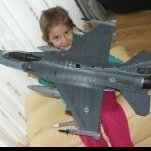
scjh
LSP_Members-
Posts
79 -
Joined
-
Last visited
-
Days Won
2
scjh last won the day on December 29 2023
scjh had the most liked content!
Recent Profile Visitors
5,601 profile views
-
 Memphis reacted to a post in a topic:
3D Printed McDonnell RF-101A/C Voodoo WIP
Memphis reacted to a post in a topic:
3D Printed McDonnell RF-101A/C Voodoo WIP
-
 Model_Monkey reacted to a post in a topic:
3D Printed McDonnell RF-101A/C Voodoo WIP
Model_Monkey reacted to a post in a topic:
3D Printed McDonnell RF-101A/C Voodoo WIP
-
 Model_Monkey reacted to a post in a topic:
3D Printed McDonnell RF-101A/C Voodoo WIP
Model_Monkey reacted to a post in a topic:
3D Printed McDonnell RF-101A/C Voodoo WIP
-
 Shoggz reacted to a post in a topic:
3D Printed McDonnell RF-101A/C Voodoo WIP
Shoggz reacted to a post in a topic:
3D Printed McDonnell RF-101A/C Voodoo WIP
-
 denders reacted to a post in a topic:
3D Printed McDonnell RF-101A/C Voodoo WIP
denders reacted to a post in a topic:
3D Printed McDonnell RF-101A/C Voodoo WIP
-
 denders reacted to a post in a topic:
3D Printed McDonnell RF-101A/C Voodoo WIP
denders reacted to a post in a topic:
3D Printed McDonnell RF-101A/C Voodoo WIP
-
 Anthony in NZ reacted to a post in a topic:
3D Printed McDonnell RF-101A/C Voodoo WIP
Anthony in NZ reacted to a post in a topic:
3D Printed McDonnell RF-101A/C Voodoo WIP
-
 Dandiego reacted to a post in a topic:
3D Printed McDonnell RF-101A/C Voodoo WIP
Dandiego reacted to a post in a topic:
3D Printed McDonnell RF-101A/C Voodoo WIP
-
 patricksparks reacted to a post in a topic:
3D Printed McDonnell RF-101A/C Voodoo WIP
patricksparks reacted to a post in a topic:
3D Printed McDonnell RF-101A/C Voodoo WIP
-
 patricksparks reacted to a post in a topic:
3D Printed McDonnell RF-101A/C Voodoo WIP
patricksparks reacted to a post in a topic:
3D Printed McDonnell RF-101A/C Voodoo WIP
-
Another challenge of this project was stencils in white for SEA schemes. I learned to use a Silhouette to cut paint masks for large markings, and bought some specialty decal papers to be able to "print in white". I made these for @Dandiego's "The Iron Eyeball". SC
-
My apologies for the long absence. I continued to apply stencil decals to the forward fuselage, but got bogged down with the rescue stencils, some of which needed white and other color shapes. The ejection seat triangles were borrowed from a commercial set. Times like this made me question the sanity of starting on a project that I couldn't easily buy off the shelf decals and parts. I also ran into issues with my 3d printer's reliability as I added more details to the rear tail part. Hopefully I can get back on track soon. SC
-
 scjh reacted to a post in a topic:
3D Printed McDonnell RF-101A/C Voodoo WIP
scjh reacted to a post in a topic:
3D Printed McDonnell RF-101A/C Voodoo WIP
-
As an FYI the Collect-Aire T-38A canopy is also a bit short on the back end. SC
-
Good point about the flatness of the KH F-5F rear canopy in profile, @Sabrejet. For what it's worth, this the the Northrop drawing in white outline over KH's instruction (assuming the instruction uses the same CAD model as the kit itself), showing the flatness of the top. Looks like the rear canopy frame does not slope up high enough to have the nice smooth curvature. I had trouble getting resin ejection seats of other brands to sit inside the rear canopy, even with my own 3d printed cockpit floor that I think is at the correct depth. I believe KH's own seat is too short in order to fit in the shallow pit and the canopy that's too low. SC
-
Before KH announced their F-5 family, I was working on a F-5F conversion using Hasegawa F-5E fuselage, so I spent a few years staring at photos, drawings, and 3D models of the F-5 family, including the T-38. In the following composite of Northrop drawings, the yellow is the T-38A and the white is the F-5F. I believe this shows the canopies are the same shape and size. However, I believe the KH F-5F rear canopy is a bit too long. Each square is 5 inches in the following comparison of the Northrop F-5F drawing and the KH F-5F forward fuselage. I would estimate the gap to be about 5 scale inches or about 4mm in 1/32. A simple trimming would probably work. I was also planning on using Collect-Aires T-38A vac canopy at the time, but the shape seems off. Many of the Collect-Aire T-38 kit parts look like resin copies of the Hasegawa F-5E parts. Here's my Hasegawa F-5F. SC
-
 scjh reacted to a post in a topic:
Tamiya F-4 rear fuselage reshaping?
scjh reacted to a post in a topic:
Tamiya F-4 rear fuselage reshaping?
-
Help for the Kittyhawk 32nd scale F-5E/F. Your input is needed!
scjh replied to f5guy's topic in LSP Discussion
There was a 71 page SIG thread: and the tweaklist compiled by @thierry laurent here: For those that have the Zimi F-5E/F RF-5E kits, take a look at the gravity fuel fillters on the spine behind the cockpit. They may have fixed the error, Kitty Hawk kits had them on the startboard side instead of port side. SC -
 scjh reacted to a post in a topic:
3D Printed Space: 1999 Eagle Transporter in 1/32 WIP
scjh reacted to a post in a topic:
3D Printed Space: 1999 Eagle Transporter in 1/32 WIP
-
Hi JeffT, Great to hear anothe 1:32 Scale Eagle in the works! I believe the original pilots in the 44" Eagle came from the 1/24 Revell Gemini kit. Another possible source may be MPC Round 2's Moon Buggy, which is also in 1/24. You'll have to scale them down to 1/32. SC
-
 scjh reacted to a post in a topic:
Recce Voodoo
scjh reacted to a post in a topic:
Recce Voodoo
-
 scjh reacted to a post in a topic:
Recce Voodoo
scjh reacted to a post in a topic:
Recce Voodoo
-
 scjh reacted to a post in a topic:
Recce Voodoo
scjh reacted to a post in a topic:
Recce Voodoo
-
 scjh reacted to a post in a topic:
Recce Voodoo
scjh reacted to a post in a topic:
Recce Voodoo
-
 scjh reacted to a post in a topic:
Recce Voodoo
scjh reacted to a post in a topic:
Recce Voodoo
-
 scjh reacted to a post in a topic:
Recce Voodoo
scjh reacted to a post in a topic:
Recce Voodoo
-
 scjh reacted to a post in a topic:
Recce Voodoo
scjh reacted to a post in a topic:
Recce Voodoo
-
Congratulations Dan, for taking home an award for this FB-23 from OrangeCon. It's a truly impressive sight to behold. SC
-
Thank you Ray! It didn't win anything. There were so many awesome models on display. It was fun just to participate and meet other modelers. SC
-
Instead of sitting comfortably in the display case, the Eagle Transporter made quick a visit to the Nuclear Waste Area "OrangeCon 2024". This was a first time for me to put something on a contest table. The Eagle was disassembled during transport, to be assembled on the table. It was all going well until I realized the Command Module and Engine sections would not fit into the front and rear Cages. I was sure the Cages were facing the correct direction by checking on the oleo structs of the Landing Pads, but I managed to swap the front and rear Cages. Dooh! So had to take it apart to re-assemble. Thanks to @Dandiego who literally lent his helping hands for the re-assembly! SC
-
Thanks again to @Martinnfb for checking in on the Eagle. I decided to make some very simple markings based on MPC's kit decals to spruce up the Eagle a bit. They are not quite "screen-accurate", but should provide a much better representation. This wasn't attempted earlier also because I wasn't sure how waterslide decals will work over the unsmoothed and unpainted surfaces. So I tried tatoo decals instead, which might grip to the surfaces better. One plus is there is no clear coating needed after the ink-jet printing, but a minus is there is no moving the decal around for adjustment once the backing paper is wet. This made decaling a more exciting experience. SC
-
Thank you Alan, John, and Serkan! Your great builds have inspired me. Making slow progress, but Sun Run #4 bands are painted on the fuselage, and decaling has begun. The stencil placements will need some adjustments, and hopefully I can get rid of the slight white borders around the larger decals in the next iteration. SC
-
Hi Bill, I bought one of these for the purpose of making canopies. A single seater Voodoo canopy in 1/32 will fit into the area, but not a double seater canopy if you want a continuous pull. I also tried separating the windshield. The 3d printed buck I used will not withstand repeated use, so I plan to try printing a negative volume, then use something like Durham's Water Putty to make the buck next time. Might also try using 3d print for the framing and just use the vacu-form for the transparency. This was a quick test so I didn't spend any time post-processing the buck. Will probably try a resin 3d print buck evntually. SC
-
Practice masking on a spare fuselage of the yellow bands on Sun Run #4. I found that the walkways were important to establish with positioning of the stripes. The leading edge of the walkways will be modified appropriately to be more perpendicular as these were just scaled up version of the Tiger Wings decals. Most, if not all of the commerically available walkway decals I have found in 1/48 seem to be designed for the two-seater. And like many things I've discovered about the Voodoos, there are multiple versions of the walkways, in addition to the RF-101A and RF-101C having different length intakes. Even the red jet warning stripe towards the back of the fuselage had two possible positions. If one looks closely at the decal mock up in my previous post, one might fnd the US National Insignia is positioned for the A version, which is not correct for the C. In a way I am glad I'm building both at the same time, so I can possibly show off some of the variations.



.thumb.png.64af68ce3763f9af8a91e71374ce741e.png)

